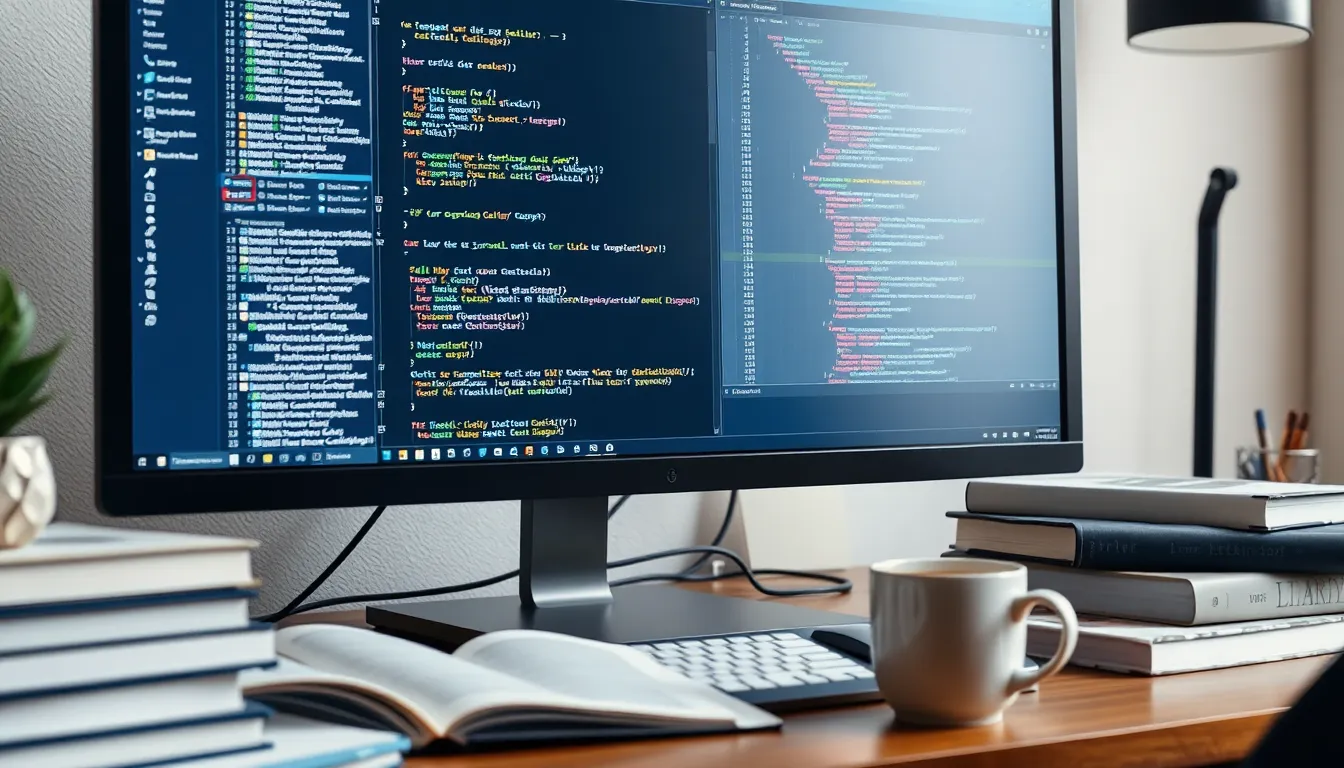Table of Contents
ToggleDebugging in C++ can feel like trying to find a needle in a haystack—if the haystack were on fire and the needle was hiding under a pile of spaghetti code. Every programmer knows that feeling of dread when the compiler throws an error, and the clock ticks away as deadlines loom. But fear not! Debugging doesn’t have to be a terrifying monster lurking in the shadows. With the right tools and techniques, it can transform into a manageable task, even a bit fun.
Overview of C++ Debugging
C++ debugging involves diagnosing and fixing errors within C++ code. Common methodologies include reviewing source code, analyzing debugger outputs, and utilizing logging statements. These techniques help identify syntax, runtime, and logical errors.
Tools like GDB (GNU Debugger) and integrated development environments (IDEs) such as Visual Studio offer valuable support. Using GDB, a programmer can set breakpoints and examine variable values at runtime. Visual Studio’s features provide a user-friendly interface for tracking bugs.
Understanding common error types is vital. Syntax errors arise from mistakes in code structure, while runtime errors occur during execution. Logical errors turn out to be the trickiest, as they don’t generate error messages and often lead to unexpected behavior.
Effective strategies simplify the debugging process. Isolating sections of code allows a programmer to identify faulty components. Writing unit tests can prevent bugs from reaching production. This proactive approach leads to cleaner, more reliable code.
Establishing a systematic debugging process enhances efficiency. Each step should involve replication of the bug, gathering relevant data, and hypothesizing potential fixes. Prioritizing these steps fosters better organization during the debugging phase.
Incorporating debugging best practices leads to continuous improvement. Keeping a debugging log provides insights into frequent issues, helping developers recognize patterns over time. Leveraging these patterns informs strategies for future projects.
Ultimately, C++ debugging requires patience and persistence. Organizing resources effectively can transform a daunting process into a manageable task. Leveraging the right mindset alongside effective tools facilitates a smoother debugging experience.
Common Debugging Techniques

Various techniques enhance C++ debugging efficiency. Two prominent methods include print debugging and interactive debugging.
Print Debugging
Print debugging involves inserting print statements into the code to track variable values and program flow. Developers often insert std::cout or similar commands at strategic points. These statements reveal what the code is doing and help identify where issues arise. Logging can clarify complex logic and highlight discrepancies between expected and actual outcomes. This method remains a simple yet powerful technique that requires minimal additional knowledge. While print debugging can clutter code, developers appreciate its immediate feedback during the development process.
Interactive Debugging
Interactive debugging utilizes tools that allow real-time examination of code execution. Debuggers like GDB offer features such as breakpoints and step-through execution. Setting breakpoints enables the developer to pause execution at specific lines. This pause allows for inspecting variable states and call stacks. Interactive debugging simplifies isolating and fixing problems. It streamlines the debugging process by enabling immediate feedback and error analysis. This method proves especially effective for complex bugs and runtime errors, where the programmer gains deeper insights into how code behaves under various conditions.
Tools for C++ Debugging
C++ debugging relies on effective tools that streamline the process. Several options exist, each with unique features and benefits.
Integrated Development Environments (IDEs)
IDEs like Visual Studio and Code::Blocks provide comprehensive tools for C++ debugging. They usually integrate debugging features directly into the development workflow. Developers can set breakpoints, step through code, and inspect variables within a user-friendly interface. Visual Studio supports advanced debugging techniques such as memory profiling and code analysis. Code::Blocks offers a customizable environment, enabling developers to tailor debugging options to their needs. IDEs also facilitate easy navigation through code, reducing the time spent tracking down bugs.
Command-Line Debuggers
Command-line debuggers like GDB offer an alternative for debugging in C++. These tools require entering commands in a terminal window, appealing to developers who prefer a non-GUI approach. GDB provides powerful functionalities such as setting breakpoints, examining memory, and tracing program execution. Users can gain insights into variable values and function calls, aiding in the identification of logical errors. Command-line debuggers also consume minimal system resources. This efficiency allows developers to focus on the debugging task with fewer distractions.
Best Practices for Effective Debugging
Adopting best practices enhances the debugging process in C++. Utilizing a systematic approach generally leads to quicker resolutions. One effective method involves isolating problematic code sections, making it easier to identify the source of errors.
Keeping a debugging log helps document observed behaviors and error patterns. By noting down each step taken, programmers can reflect on past issues and solutions for future reference. Practicing incremental development allows developers to test code often, reducing the complexity of bugs present at the end of the development cycle.
Employing unit tests significantly improves code quality and minimizes the chance of bugs reaching production. Writing tests for individual components ensures that functionality remains intact throughout changes.
Using descriptive logging statements enables better tracking of variable values and flow control. This practice aids in understanding the program’s behavior at different execution points.
Incorporating tools like GDB or IDE features effectively enhances the debugging experience. These tools provide functionality for setting breakpoints, enabling step-through execution, and inspecting variable states.
Avoiding print debugging clutter requires a balanced approach. While print statements offer quick insights, interactive debuggers often yield clearer and more organized feedback.
Collecting relevant data for reproducing bugs can be crucial. Ensuring the ability to replicate an error streamlines the process of diagnosing issues.
Exploring community resources, such as forums or documentation, can provide additional insights. Learning from others who faced similar challenges often surfaces new techniques and solutions.
Prioritizing these best practices fosters a culture of continuous improvement within teams. Embracing efficient debugging strategies creates a more productive environment, ultimately leading to enhanced software quality.
C++ debugging doesn’t have to be an overwhelming experience. With the right mindset and tools it can become a manageable and even rewarding part of the development process. Embracing systematic methodologies and utilizing effective debugging tools can significantly streamline the journey of identifying and fixing errors.
By prioritizing best practices like maintaining a debugging log and isolating code sections developers can enhance their efficiency and improve code quality. Engaging with community resources and continuously refining debugging skills fosters a culture of improvement that benefits both individual programmers and their teams. Ultimately patience and persistence are key to mastering the art of debugging in C++.




